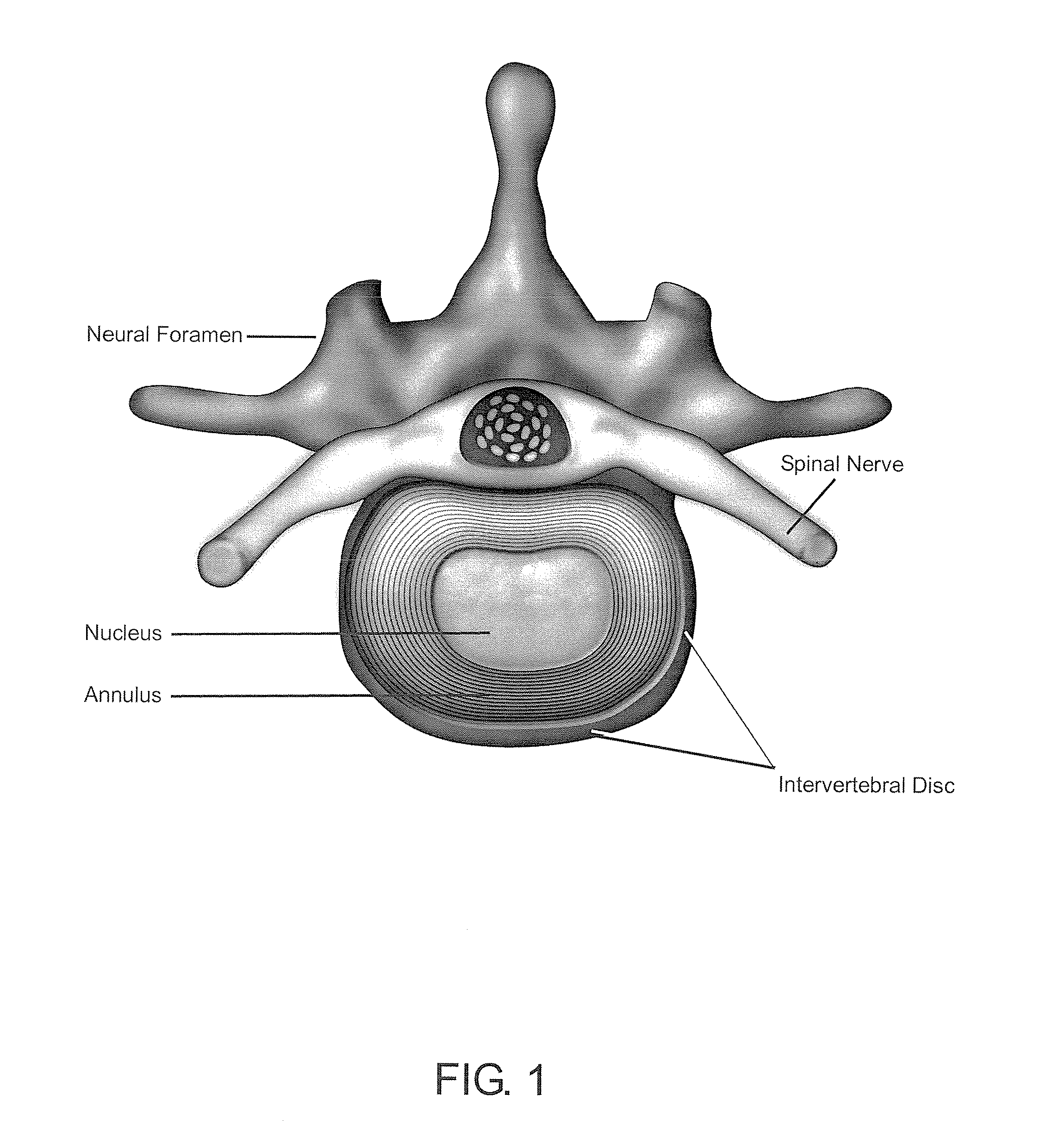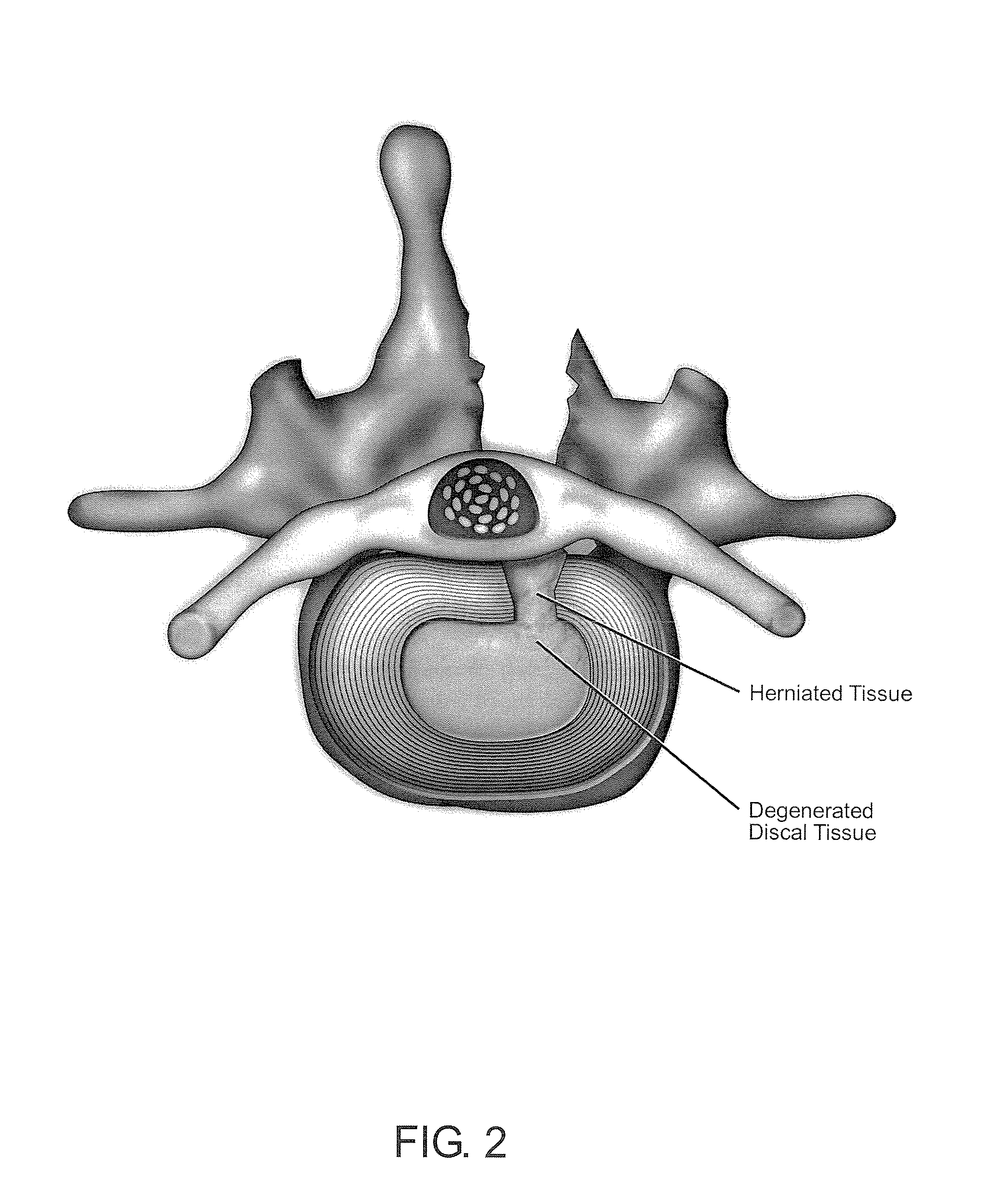Methods and compositions for repair of cartilage using an in vivo bioreactor
a bioreactor and cartilage technology, applied in the field of cartilage repair, can solve the problems of low porosity of scaffolds, insufficient supply of nutrients to cells, and insufficient support of cell growth, so as to reduce risks, improve the functioning of scaffolds, and reduce the chance of surgical complications and re-interventions.
- Summary
- Abstract
- Description
- Claims
- Application Information
AI Technical Summary
Benefits of technology
Problems solved by technology
Method used
Image
Examples
example 1
Exemplary Materials and Methods
[0153]Exemplary embodiments of materials and methods for use in the invention are described in this Example.
Cell Culture
[0154]While autologous HDFs harvested from the patient are used to construct the implant, preliminary studies are performed using neonatal foreskin fibroblasts, as there are convenient sources of cells for experimental purpose, for example. Further studies using autologous cells harvested from the patient are performed to demonstrate that the procedure works with these cells.
[0155]Neonatal foreskin HDFs are obtained from Cascade Biologics (Portland, Oreg.) and expanded in vitro with DMEM (Invitrogen, Carlsbad, Calif., USA), containing 10% FBS (Invitrogen) and antibiotics. Suspensions of HDFs are seeded in alginate or in monolayer culture as described below.
[0156]To generate alginate gel cultures, cells are suspended at high density (107 cells / ml) in 2% wt / vol medium viscosity alginate (Sigma-Aldrich, St. Louis, Mo.), and 25 mL drople...
example 2
Assessment of Cell Viability of HDFs in Alginate Beads
[0167]The viability of HDFs in alginate beads cultured in chondrogenic medium is tested by light microscopy and / or viability test, in specific aspects of the invention. Light microscopy is employed to study morphology and proliferation of HDFs. In an exemplary viability test, alginate beads are dissolved in dissolving-buffer (0.55 M Na-Citrate, 1.5 M NaCl, and 0.5 M EDTA), cells are centrifuged, and the pellet is treated with collagenase for 1 h. Cells are resuspended in DMEM, and viability is determined using a Neubauer chamber and the trypan blue exclusion method, for example.
example 3
Assessment of Chondrogenic Differentiation
[0168]In specific embodiments, HDFs are characterized by the production of collagen of type I, III and V, while chondrocytes are characterized by the production of collagen of type II, IX, XI and the production of sulfated proteoglycans.
[0169]Chondrogenic differentiation is assessed by measuring sulfated glycosaminoglycan (sGAG ) content and collagen I et II production by western blotting. The rate of collagen synthesis is measured by [3H]-proline incorporation.
Total DNA and sGAG Content
[0170]Cells in alginate beads are recovered from the alginate using 55 mM sodium citrate, 0.9% NaCl solution. Then the cells are lysed in 300 μl of 0.5% v / v Nonidet P-40 buffer (50 mM Tris-Cl, 100 mM NaCl, 5 mM MgCl2). The lysate is transferred to microcentrifuge tubes, spun, and DNA is measured in a 100 μl supernatant aliquot using the Hoescht dye method (DNA Quantification Kit, Sigma, St. Louis, Mo.) with calf thymus DNA as standard. The remaining lysis bu...
PUM
| Property | Measurement | Unit |
|---|---|---|
| Time | aaaaa | aaaaa |
| Force | aaaaa | aaaaa |
| Structure | aaaaa | aaaaa |
Abstract
Description
Claims
Application Information
 Login to View More
Login to View More - R&D
- Intellectual Property
- Life Sciences
- Materials
- Tech Scout
- Unparalleled Data Quality
- Higher Quality Content
- 60% Fewer Hallucinations
Browse by: Latest US Patents, China's latest patents, Technical Efficacy Thesaurus, Application Domain, Technology Topic, Popular Technical Reports.
© 2025 PatSnap. All rights reserved.Legal|Privacy policy|Modern Slavery Act Transparency Statement|Sitemap|About US| Contact US: help@patsnap.com



